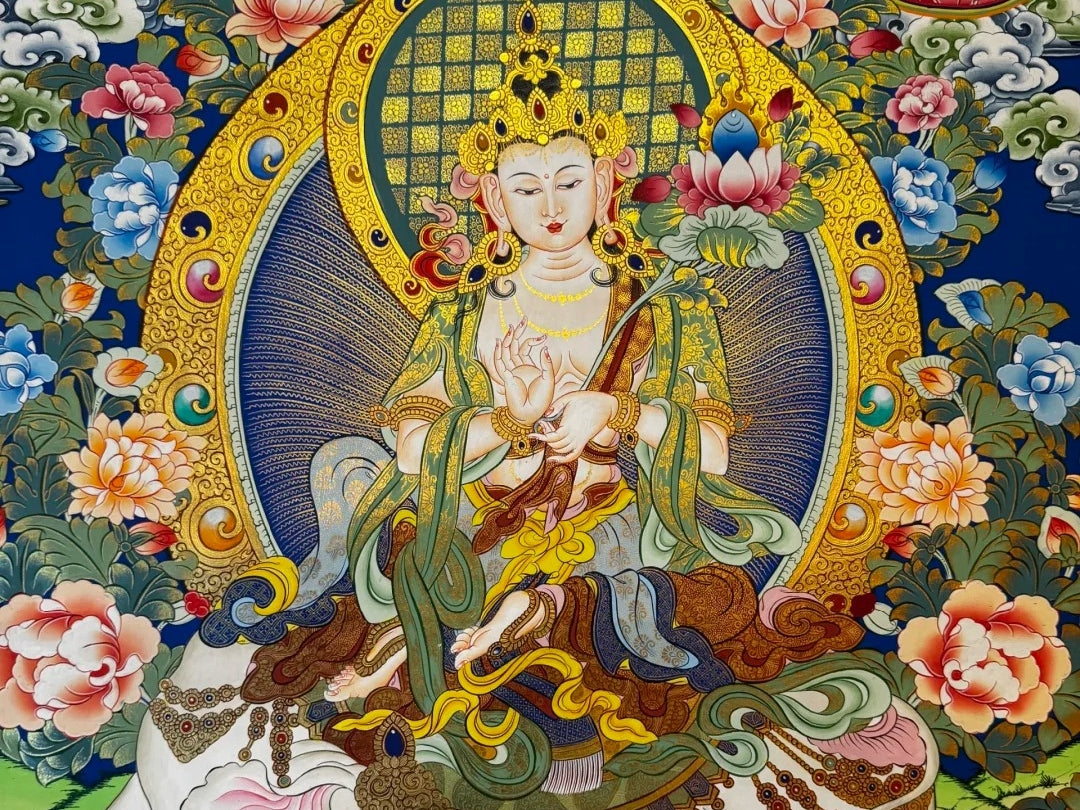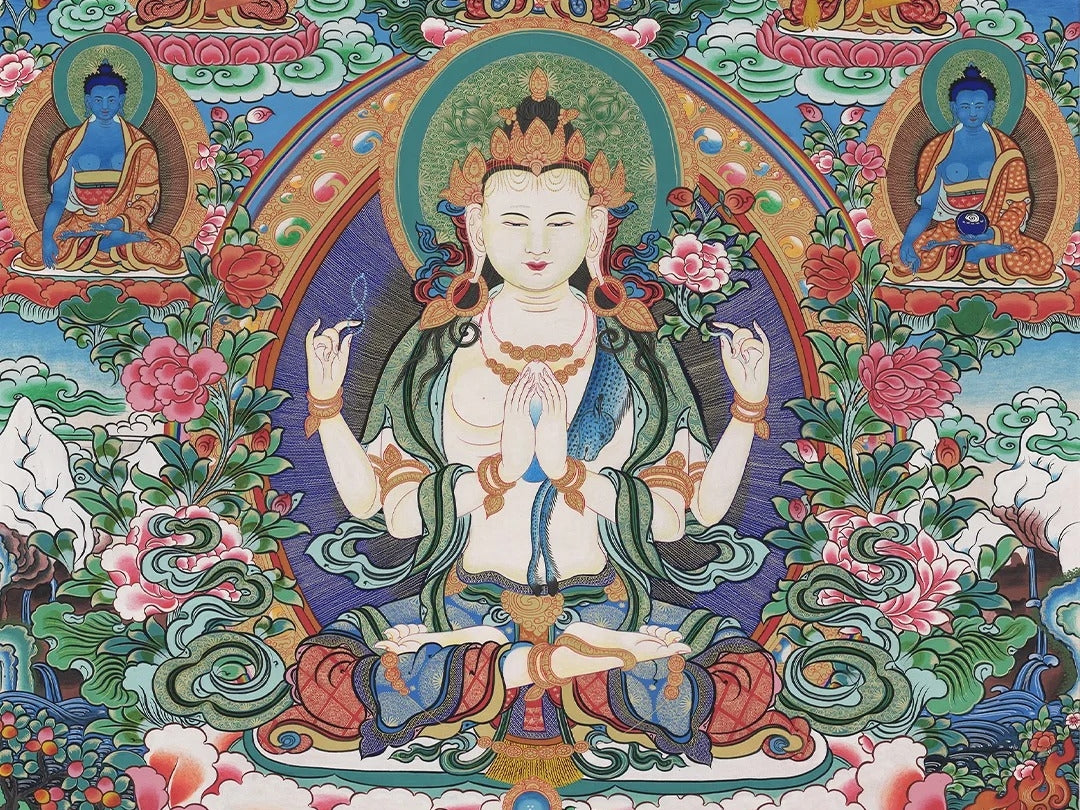In exploring the ritual of Thangka blessings, we delve deep into the rich cultural heritage of Tibetan Buddhism, uncovering the beliefs and ceremonies behind this ancient art form. A Thangka (唐卡), a jewel of Tibetan culture, is not merely a religious artwork but a medium through which believers find spiritual connection and guidance in their practice. The blessing ceremony (加持) aims to imbue the Thangka with sacred power through recitations, mantras, and visualizations performed by a high-ranking monk or lama, offering purification, protection, or enhanced spiritual potency.

1. The Origin and Significance of Thangka Blessings
The origins of Thangka blessings date back to the early spread of Buddhism into Tibet (7th century). As Buddhism took root in the Tibetan plateau, Thangkas became a crucial medium for spreading teachings and promoting Dharma. Over time, the practice of blessing these artworks became integral to Tibetan Buddhist rituals.
For devotees, a blessed Thangka pendant necklace transcends its material nature; it becomes a bridge between the spiritual and the physical world. This ritual imbues the Thangka with multiple layers of meaning, including prayer, protection from evil, and the bestowal of good fortune. The blessing grants the Thangka a sacred energy that believers use for spiritual connection and meditation.

2. The Ritual Process of Blessing a Thangka
The blessing of a Thangka is a solemn ceremony typically led by a revered lama or monk. The process is filled with ritualistic elements, making it a deeply spiritual experience. Here’s a typical breakdown of the ritual:
- Purification of the Altar and Invocation: Before the blessing begins, the lama conducts a purification ritual to cleanse the altar space of any impurities. This involves chanting and reciting mantras, preparing the environment for the ceremony. Following the purification, the lama invokes the presence of the Buddhas, Bodhisattvas, and protective deities to bestow their blessings upon the Thangka.

- Opening Eyes Ceremony and Empowerment: Once the deities have been invoked, the monk performs the Opening Eyes Ceremony (开光). This is where the eyes of the depicted deities in the Thangka are symbolically opened, allowing the Thangka to be seen as a living, spiritual entity. This is followed by the Empowerment Ritual (灌顶), in which the wisdom and compassion of the Buddhas are infused into the Thangka, imbuing it with protective power.

- Recitation and Mantras: The next stage involves continuous recitation of scriptures and mantras over the course of several days or weeks. Every chant, every gesture is infused with the deep compassion and wisdom of the Buddha's teachings. The colors of the Thangka seem to glow more brightly, and the images appear to come to life, as if infused with the essence of the divine.

- Sealing and Offering: At the conclusion of the ritual, the lama places a symbolic seal on a specific part of the Thangka, signifying that the ceremony is complete and the Thangka has received the blessings. It is then placed on an altar or shrine at home or in a monastery, becoming a focal point for prayer and meditation in the devotee's daily life.

3. Customs and Taboos Related to Thangka Blessings
The blessing of a Thangka is not to be taken lightly. There are certain customs and taboos associated with the process to ensure that the blessing is pure and effective.
- Reverence and Respect: Devotees must approach the Thangka blessing with deep reverence and humility. This respect extends to the monk, the Dharma, and the Thangka itself. Without such reverence, the blessings may not be fully realized.
- Purity of Body, Speech, and Mind: Before the ceremony, participants should engage in acts of purification such as bathing, wearing clean clothes, and refraining from impure thoughts. This helps remove karmic impurities and makes the blessing more effective.
- Focus and Chanting: During the blessing, it’s essential for participants to remain fully focused and continuously chant mantras. This devotion helps to transfer merit and blessings to the Thangka.
- Avoiding Disturbances: The blessing ceremony should not be interrupted by external distractions or unrelated conversation. Additionally, the monks participating should refrain from worldly activities or discussions during the process.
- Proper Maintenance: After the ceremony, the blessed Thangka must be properly cared for. Regular offerings such as fresh flowers and clean water should be made, and the Thangka should be kept in a clean, respectful environment. Devotees are also encouraged to adhere to the teachings and guidelines provided by the monks or temples regarding its use.
The blessing of a Thangka is one of the most significant rituals in Tibetan Buddhism, symbolizing the deep faith and spiritual pursuit of the devotees. It also showcases the artistic creativity and religious wisdom of the Tibetan people. Through the ritual of blessing, a Thangka becomes more than just a work of art—it transforms into a sacred bridge that connects the divine and the human, offering protection, guidance, and spiritual solace to those who seek it. May every Thangka necklace, pendant, or painting continue to shine with divine light, providing protection and spiritual support to its owners for years to come.



